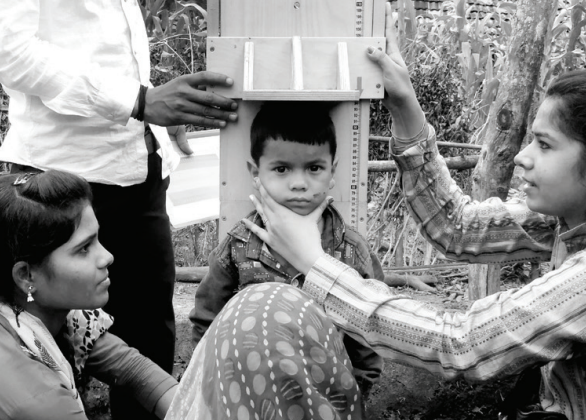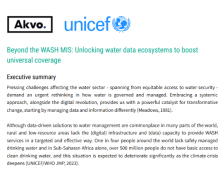Standardized Monitoring and Assessment of Relief and Transitions (SMART) Survey for Nutrition, Food Security and WASH

The fourth round of National Family Health Survey in 2015-16 indicated that 21 percent of children under 5 years of age in India had wasting (having low weight for height, below -2 standard deviations, based on the World Health Organization standard) of which 7.5 percent had severe wasting. High prevalence of wasting or acute malnutrition across states necessitated the need for implementing a comprehensive community-based management of children with acute malnutrition.
Currently, the Government of India and state governments with the technical support of UNICEF are providing quality care for children with Severe Acute Malnutrition (SAM) through 1151 Nutrition Rehabilitation Centres (NRC) across the country. However, even in the best circumstances, neither NRCs can handle the entire case load of the children at district/state level nor do all the children with SAM require facility-based care. Besides, there are common barriers related to distance, high opportunity cost, the responsibility of other children/family members that prevent families to access and seek care at NRC for their children.
A comprehensive community-based approach for management of Severe Acute Malnutrition (CSAM) has made effective treatment possible for SAM cases without medical complications in the community, near their homes. CSAM approach envisages early detection, referral and effective treatment of children with SAM. Further, it is designed to achieve greatest possible coverage by making services accessible to the most vulnerable children in their community itself.
The state governments were keen to demonstrate comprehensive CSAM at a block or district level and learn from this demonstration programme what is required to deliver CSAM services in a sustainable, efficient, cost-effective, and integrated manner that builds upon existing government systems and infrastructure.
National level surveys like National Family Health Survey (NFHS) do not provide data on nutritional status of children at the block level. Nutrition survey based on SMART methodology helps to estimate the prevalence of acute malnutrition which set the baseline indicator for the programme.
The state governments in partnership with UNICEF planned to demonstrate and roll out Comprehensive Community-based programme for management of children with Severe Acute Malnutrition (CSAM) programme, which aimed to strengthen both treatment and prevention of children with SAM. SMART survey estimates the prevalence of wasting, stunting, and underweight among children aged 6-59 months in the districts. The results of the survey aid in estimation of the case load for effective programme planning and implementation. The survey findings would also support advocacy with the state for scale-up, as the findings of the block/district survey indicate high SAM prevalence.
The survey captures other determinants like Infant and Young Child Feeding (IYCF) practices, maternal nutritional status and household level indicators on food security, Water, Hygiene and Sanitation (WASH) that enriches contextual information for programmatic decisions. These findings guide policy makers in planning, designing and implementing an effective CSAM programme.




